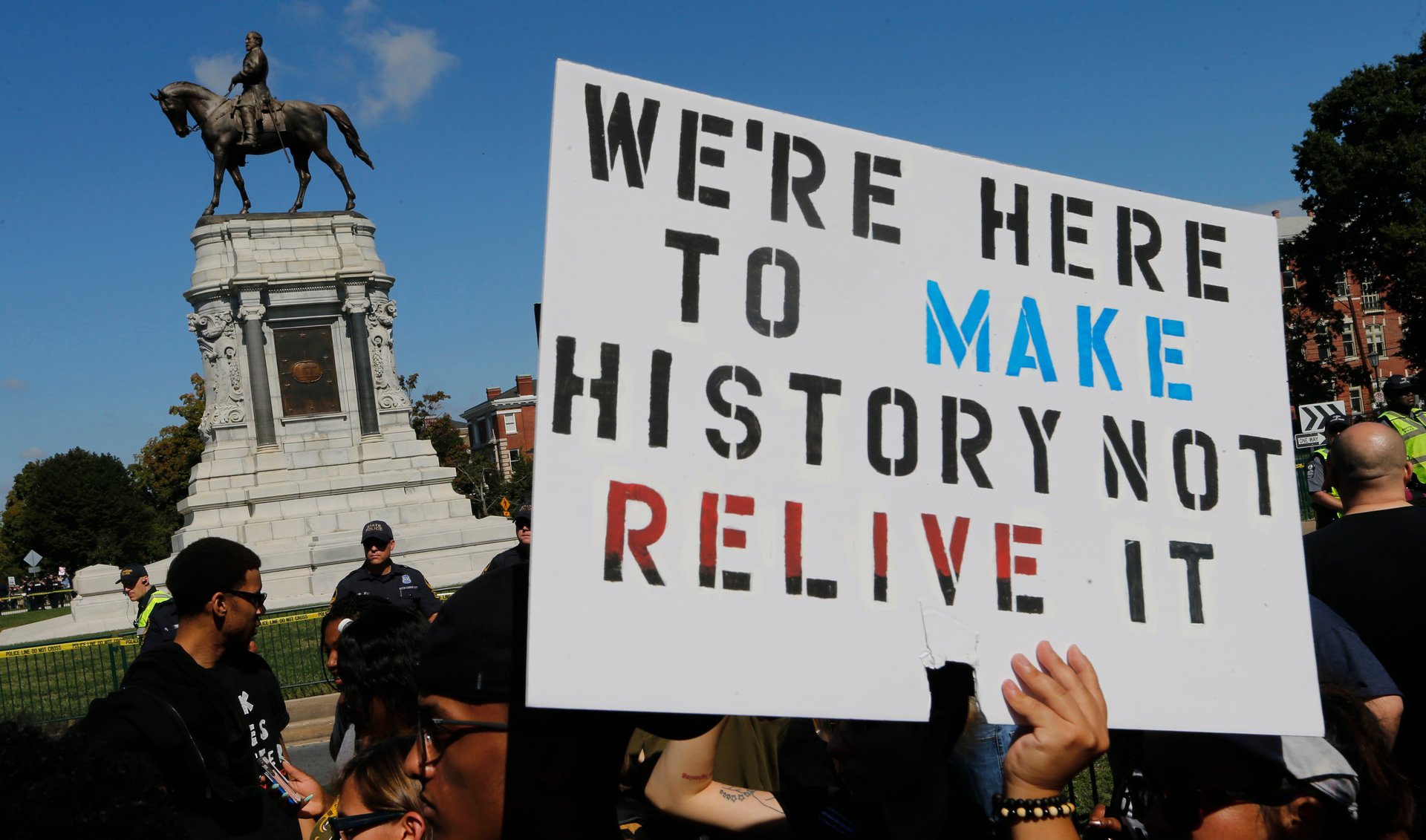An elementary school in the former capital of the Confederacy has been renamed after Barack Obama
Richmond


Richmond
On the eve of Juneteenth, the school board of Richmond, Virginia voted to rename J.E.B. Stuart Elementary after Barack Obama. In a city full of politically loaded symbols, this is a big one.
The former Confederate capital is riddled with statues of Civil War figures like Stuart, most notably on Monument Avenue. The debate over whether to take them down has waxed and waned over the last several decades. But public pressure over the last few years has intensified, after a series of events forced even complacent Richmonders to consider America’s racist past and present.
Dylann Roof’s murderous attack on a black church in Charleston, South Carolina, followed by the election of Donald Trump and the ensuing white supremacist rally in nearby Charlottesville, has finally started to upend a foundation of Richmond’s identity: Statues honoring the white men who once commanded armies in the name of slavery, looking down on the city from enormous pedestals.
The city’s mayor Levar Stoney, who is black, has dragged his feet about what to do about the city’s Confederate monuments. It took gubernatorial candidate Ralph Northam to announce his own support before Stoney agreed to let the Monument Avenue Commission even consider removing them.
The move to create Barack Obama Elementary was also controversial, though not necessarily for the reasons you’d think. Kenya Gibson, the lone dissenter at the school board vote, was in favor of removing Stuart’s name, but wanted to replace him with a local figure. “This is Richmond and we are about history and we have so many great local stories to tell,” Gibson said. “Our local stories are so important to cherish.” Civil rights leader Barbara Johns and local attorney Oliver Hill, both instrumental in the landmark 1954 Brown v. Board of Education case, were put forward as options, along with Henry Marsh, the first black mayor of Richmond.
Richmond itself is majority black—as are 90% of the students at the former J.E.B. Stuart Elementary—but the city’s white majority has done its best to assert its dominance over the past two centuries. Most of the monuments were erected during the Jim Crow era, with the crown jewel—Robert E. Lee’s statue—rising defiantly in 1890. Stuart Elementary was established in 1922, at the same time as the NAACP was working to pass an anti-lynching bill that was ultimately blocked by Southern senators.
Though last night’s renaming of the school met with surprisingly little opposition, the Richmond region has miles to go before it comes to grips with its monuments to racism. A notoriously poverty-stricken corridor is anchored by Jefferson Davis Highway, and neighboring Hanover County recently voted to keep “Confederates” and “Rebels” as the mascots of Lee-Davis High School and Stonewall Jackson Middle School, respectively. And of course, the city’s infamous monuments are still atop their pedestals—though the students currently enrolled at Barack Obama Elementary may one day have something to say about that.